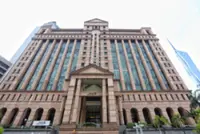Artificial intelligence was used to find the best possible alloy for the electrolysis of water. — Photography Petmal/Getty Images/AFP Relaxnews
Researchers at Canada's University of Toronto have used artificial intelligence to optimise the development of catalysts for the production of green hydrogen.
By definition, green hydrogen is produced by the electrolysis of water using electricity from renewable sources such as wind, solar or hydroelectric power. Electrolysis is the process of splitting water into oxygen and hydrogen using an electric current. The problem is that this operation currently requires the use of rare and/or expensive metals. That's why researchers set out to develop the most effective alloy to make this process more efficient and more affordable. The results of their research are published in the Journal of the American Chemical Society.





